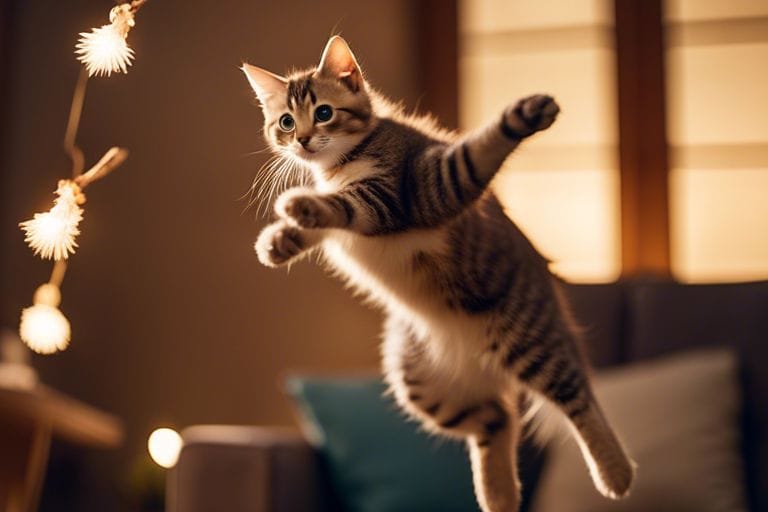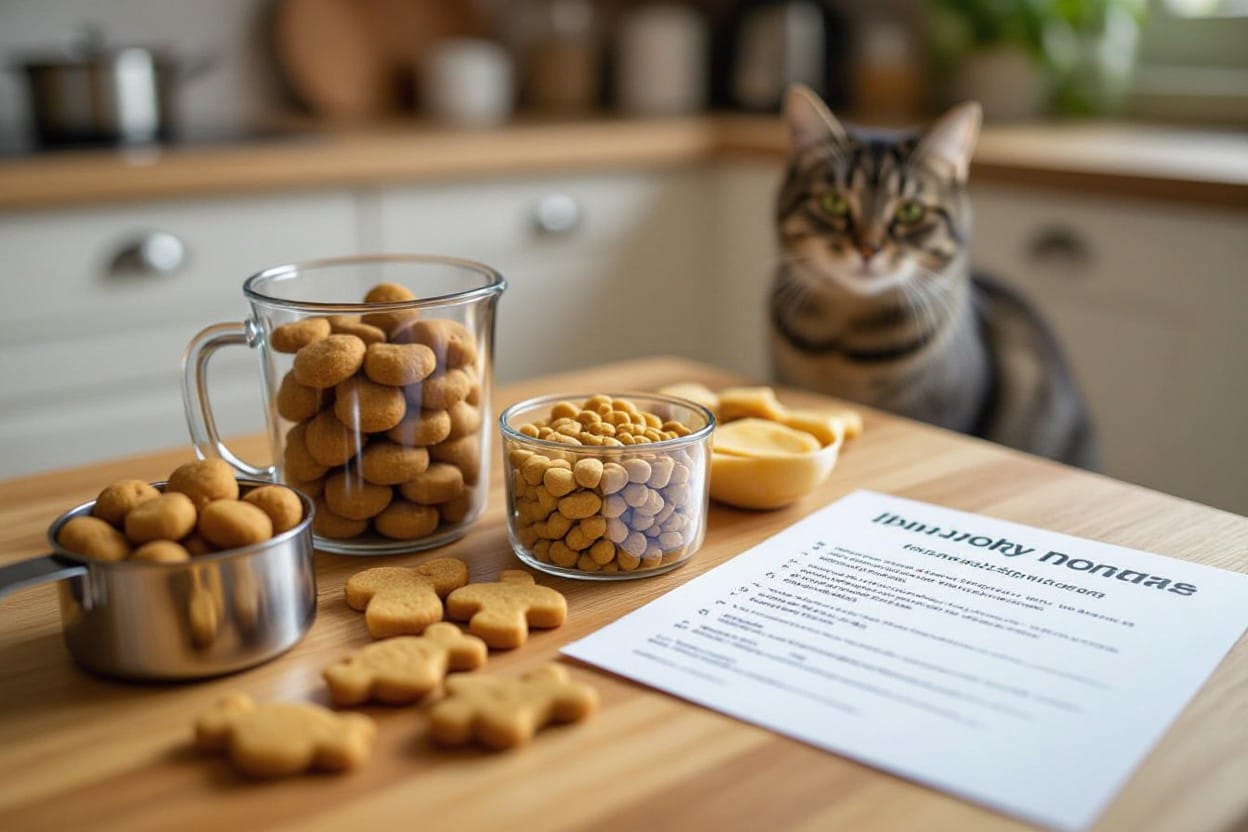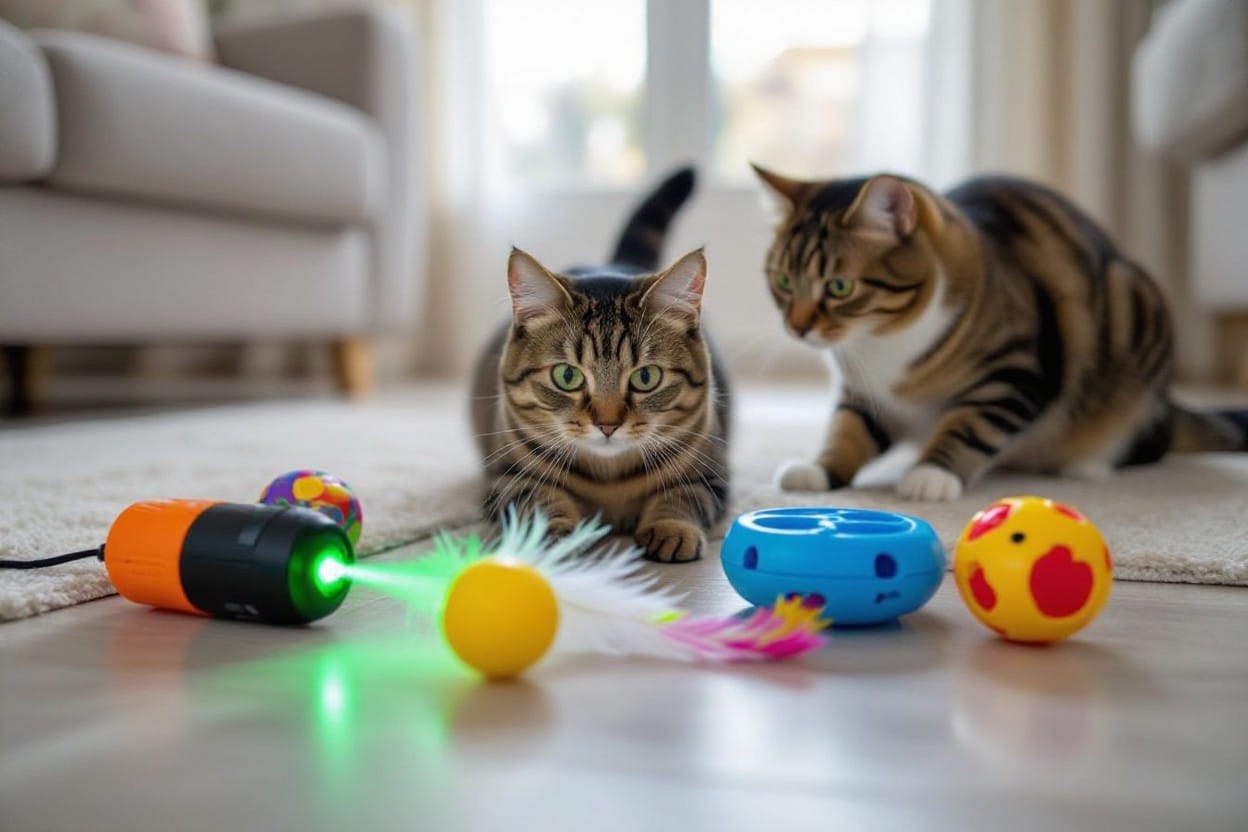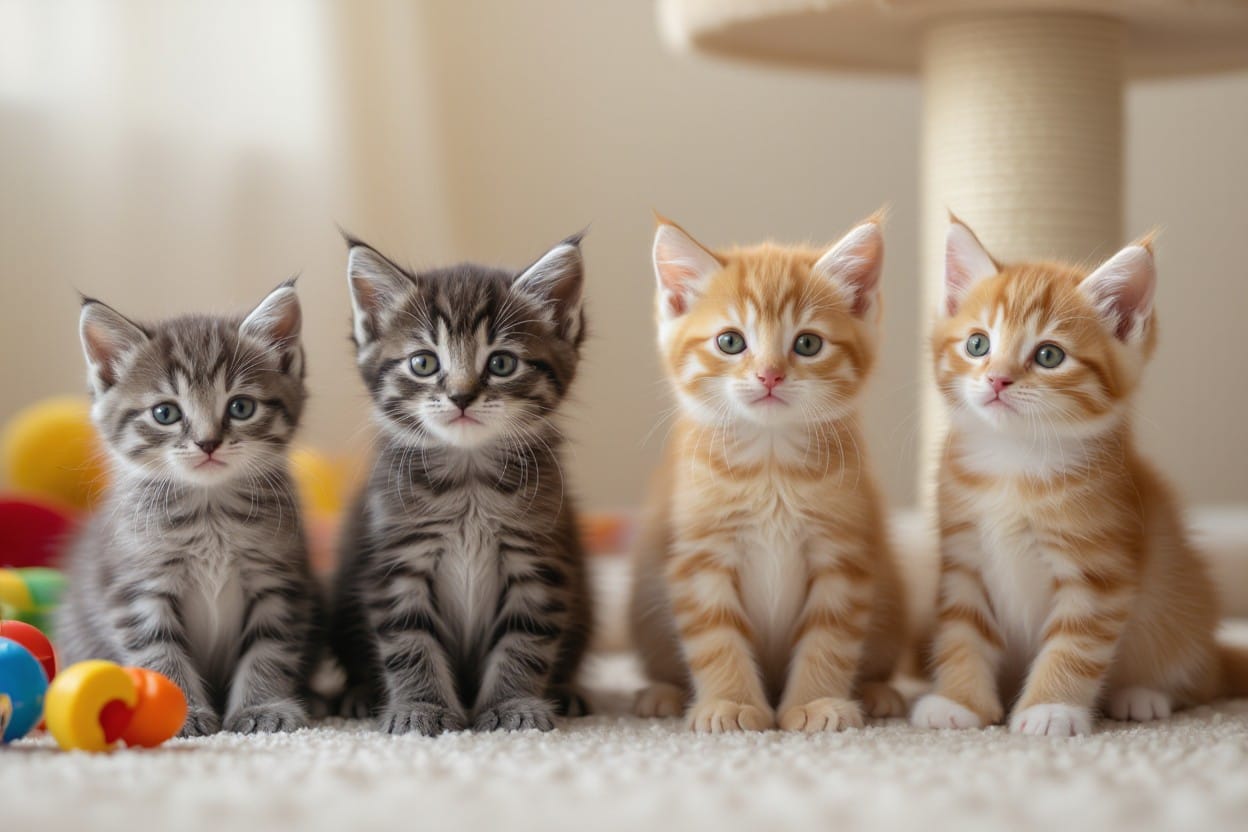Most cat owners know that keeping their feline companions active and entertained is crucial for their overall well-being. In this blog post, we will explore the numerous benefits of exercise and play for our beloved fur babies. From physical health to mental stimulation, regular playtime and activity are necessary for ensuring a happy and healthy lifestyle for our cats.
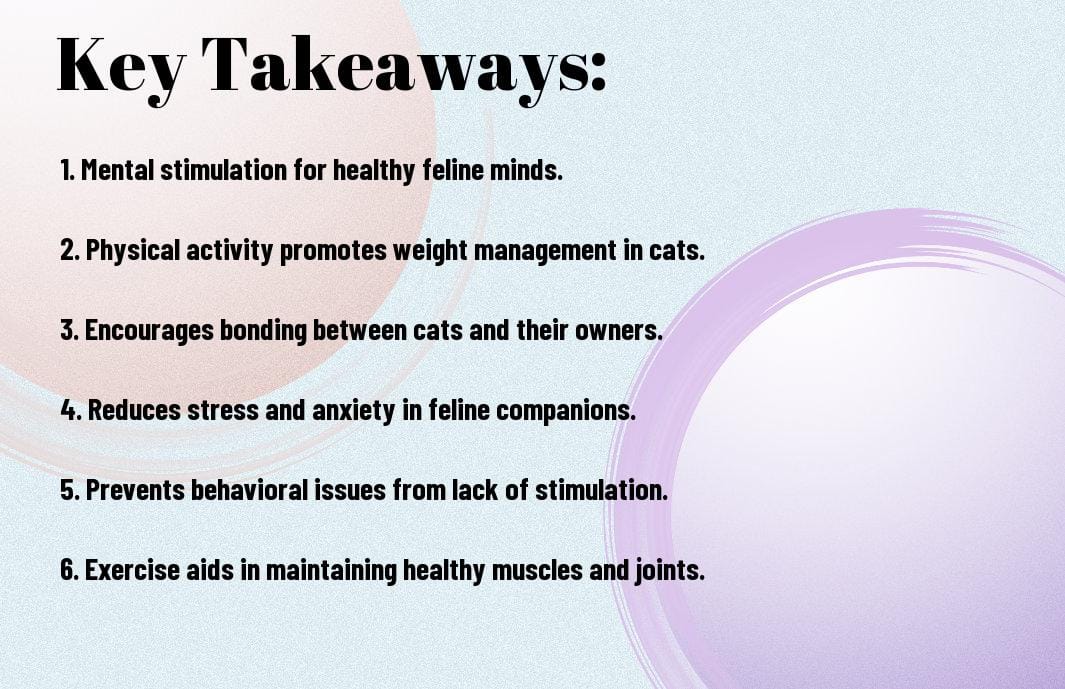
The Physical Benefits of Exercise for Cats
Weight Management and Obesity Prevention
Weight management is crucial for the overall health and well-being of your feline friend. Regular exercise helps in burning calories and maintaining a healthy weight, reducing the risk of obesity-related health issues such as diabetes, heart disease, and joint problems. Interactive play sessions and engaging toys that encourage movement can aid in keeping your cat’s weight in check.
Boosting Cardiovascular Health
Exercise plays a vital role in promoting cardiovascular health in cats. Regular physical activity helps in improving blood circulation, strengthening the heart muscle, and reducing the risk of heart diseases. Engaging your cat in activities that elevate their heart rate, such as chasing toys or climbing cat trees, can contribute to a healthy heart.
To ensure your cat gets the most out of exercise in boosting cardiovascular health, aim for activities that get their heart pumping, like running around or playing with feather wands. These activities not only help in keeping your cat physically fit but also benefit their cardiovascular system.
Strengthening Muscles and Bones
With regular exercise, cats can strengthen their muscles and bones, which is important for their overall mobility and strength. Activities like jumping, climbing, and scratching help in maintaining muscle tone and bone density. Providing scratching posts, climbing trees, and toys that encourage movement can aid in keeping your cat’s muscles and bones healthy and strong.
Enhancing Agility and Coordination
Engaging in exercises that promote agility and coordination can enhance your cat’s physical capabilities and overall well-being. Activities like running through obstacle courses, chasing laser pointers, and playing with interactive toys help in improving their balance, reflexes, and coordination skills. Regular exercise that focuses on agility can keep your cat mentally stimulated and physically agile.
Obesity prevention is a key aspect of maintaining your cat’s agility and coordination. By ensuring your cat maintains a healthy weight through exercise and play, you are supporting their ability to move with ease and grace.

The Mental Benefits of Play for Cats
Reducing Stress and Anxiety
Stress and anxiety can affect our feline friends just as they do humans. Regular play sessions can be an effective way to reduce these negative emotions in cats. Through play, cats can release built-up tension, excess energy, and frustration. Interactive toys, such as feather wands or laser pointers, provide mental stimulation and physical activity, helping cats to relax and unwind.
Stimulating Cognitive Functioning
An active play session can also stimulate a cat’s cognitive functioning. By engaging in activities that require problem-solving skills, decision-making, and coordination, cats can keep their minds sharp and agile. Puzzle toys, treat-dispensing balls, and rotating wand toys are great options for encouraging cognitive development in cats.
Reducing Stress and Anxiety
Another benefit of play is that it can mimic natural hunting behaviors, which can help cats feel more fulfilled and balanced. Engaging in activities that tap into a cat’s instinctual need to stalk, pounce, and chase can provide a sense of satisfaction and purpose. Toys that mimic small prey, such as mice or birds, can satisfy this hunting instinct and promote a sense of well-being in cats.
Types of Feline Exercise and Play
Many feline fur babies benefit greatly from engaging in various types of exercise and play activities. These activities not only keep them physically fit but also help stimulate their minds and prevent boredom. By incorporating different types of play into their routine, you can foster a healthy and happy environment for your beloved pet.
Solo Play Activities
- Chasing toys such as feather wands or laser pointers
- Playing with catnip-filled toys
- Exploring cat tunnels or puzzle feeders
- Scratching posts or pads for claw maintenance
- Interactive electronic toys that mimic prey
Play is crucial for a cat’s overall well-being. Solo play activities allow your feline friend to entertain themselves while getting the physical and mental stimulation they need to stay healthy and happy. This independence in play can help prevent behavioral issues and promote a sense of fulfillment for your cat.
This type of play also encourages your fur baby to engage in natural behaviors such as hunting and scratching, which are important for their physical and mental health. By providing a variety of solo play activities, you can keep your feline friend entertained and enriched throughout the day.
Interactive Play with Owners
- Using a wand toy to mimic prey movements
- Playing fetch with a small toy or crumpled paper ball
- Training your cat to perform tricks for treats
- Engaging in hide-and-seek games around the house
- Creating obstacle courses for your cat to navigate
For interactive play with owners, bonding and strengthening the relationship between you and your feline companion is key. This type of play allows for quality time together and helps build trust and communication. By engaging in interactive play, you can also observe your cat’s behavior and preferences, tailoring the activities to suit their individual needs.
Outdoor Versus Indoor Playtime
One of the ongoing debates in the feline world is whether outdoor or indoor playtime is better for cats. While outdoor play can provide enrichment and stimulation, it also exposes cats to various risks such as traffic, predators, and infectious diseases. On the other hand, indoor playtime ensures safety and limits exposure to potential dangers, but may lack the same level of excitement and exploration opportunities.
Play is crucial for feline fur babies, regardless of whether they play indoors or outdoors. By considering your cat’s safety, environment, and individual needs, you can create a play routine that keeps them active, engaged, and content.
How to Encourage Your Cat to Exercise More
Using Toys to Motivate Movement
With cats being natural hunters, incorporating interactive toys into their playtime can fuel their natural instincts and encourage them to move more. Toys such as feather wands, laser pointers, or treat puzzles can engage your feline pal in playful activities that stimulate their mind and body.
Creating a Stimulating Environment
Your cat’s environment plays a crucial role in their overall activity levels. Ensure that your home provides plenty of vertical spaces for climbing, scratching posts for exercise, and cozy hideaways for rest. Introducing new toys and rotating them regularly can also keep your cat curious and interested in staying active.
Plus, consider setting up window perches or bird feeders outside to provide visual stimulation for your indoor cat. This can mimic the sights and sounds of the outdoors, keeping your fur baby mentally engaged and entertained.
Establishing a Routine
Movement is key to promoting exercise in feline fur babies. Set aside dedicated play sessions at least twice a day to engage your cat in physical activities. Consistency is key in establishing a routine, as cats thrive on predictability and structure in their daily lives.
Stimulating your cat’s senses with a variety of interactive toys and activities can help prevent boredom and encourage them to stay active and healthy. Incorporating playtime into their daily schedule can strengthen the bond between you and your feline friend while keeping them fit and happy.
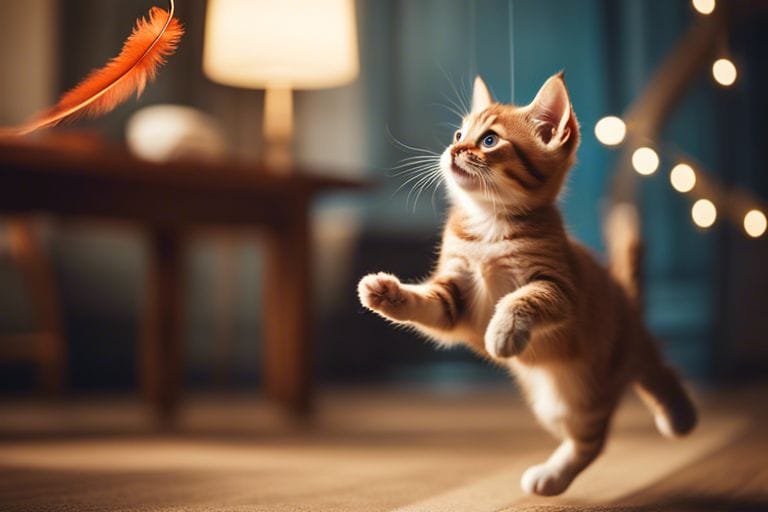
Safety Considerations During Exercise and Play
Despite the benefits of exercise and play for your feline friend, it is crucial to prioritize safety to ensure a positive experience for both you and your fur baby.
Appropriate Toys and Equipment
One of the key factors in ensuring the safety of your cat during playtime is using appropriate toys and equipment. Avoid toys with small parts that could be swallowed or pose a choking hazard. Opt for toys specifically designed for cats to prevent any accidents or injuries. Additionally, regularly inspect toys for wear and tear, replacing them when they show signs of damage to prevent potential harm to your cat.
Recognizing Signs of Overexertion
Exercise is crucial for a cat’s physical and mental well-being, but it is equally important to recognize the signs of overexertion. One common sign is excessive panting or drooling, which could indicate that your cat is pushing itself too hard. If you notice any signs of fatigue or distress during playtime, it’s crucial to immediately stop and give your cat a chance to rest and recover.
Understanding Your Cat’s Age and Health Limitations
A cat’s age and health status play a significant role in determining the type and intensity of exercise and play they can safely engage in. Young kittens may have bursts of energy but tire quickly, while senior cats may have limitations due to arthritis or other health issues. It’s crucial to tailor your cat’s play and exercise routine to their age and health condition to prevent any injuries or discomfort.
Appropriate exercise for your cat may vary depending on factors such as weight, breed, and overall health. Consulting with your veterinarian can help you develop a suitable exercise plan that meets your cat’s individual needs and limitations.
Nutrition and Hydration for Active Cats
Balancing Diet with Activity Levels
Activity plays a crucial role in the health and well-being of our feline companions. A balanced diet is imperative to support the energy requirements of active cats. It’s important to consider the activity levels of your cat when choosing the appropriate diet. Cats who are constantly on the move and engaging in play may require a diet higher in protein and fats to sustain their energy levels.
The Importance of Fresh Water
Hydration is key for active cats to maintain their overall health and vitality. Proper hydration helps regulate body temperature, aids digestion, and supports organ function. Always ensure that your cat has access to fresh, clean water at all times. Dehydration can quickly lead to health issues, so make it a priority to monitor your cat’s water intake.
With their higher energy levels and increased activity, active cats may need more water to stay hydrated. Encourage your cat to drink water by providing clean bowls in various locations around the house and consider investing in a cat fountain to pique their interest in drinking.
Conclusion
Following this detailed exploration of the benefits of exercise and play for feline fur babies, it is evident that these activities are crucial for maintaining the overall health and well-being of our beloved pets. Regular physical activity helps to prevent obesity, reduce stress, and improve their mental and physical health. By incorporating interactive play sessions and providing opportunities for exercise, cat owners can enhance the bond with their furry companions and ensure a happy and fulfilling life for their feline friends.
Hence, making exercise and play a priority for our feline companions is imperative for their happiness and longevity. By understanding the positive impact that physical activity can have on our cats, we can provide a stimulating environment that promotes their overall well-being. So, let’s grab a cat wand or toss a toy mouse and engage in some active playtime with our furry friends to keep them healthy and content.
FAQ
Q: Why is exercise important for feline fur babies?
A: Exercise is vital for feline fur babies to maintain a healthy weight, prevent obesity, stimulate their mind, and prevent behavioral issues.
Q: How much exercise do feline fur babies need?
A: Feline fur babies should have at least 20-30 minutes of active playtime each day to stay physically and mentally healthy.
Q: What are the benefits of play for feline fur babies?
A: Play helps feline fur babies release pent-up energy, strengthen their bond with their owners, reduce stress, and prevent boredom.
Q: What are some fun ways to exercise feline fur babies?
A: Interactive toys, laser pointers, climbing trees, puzzle feeders, and hiding treats around the house are all great ways to keep feline fur babies active and engaged.
Q: How can I encourage my feline fur baby to exercise and play?
A: Schedule regular play sessions, provide a variety of toys, rotate toys to keep things interesting, and offer treats or praise as rewards for active play to motivate your feline fur baby.
